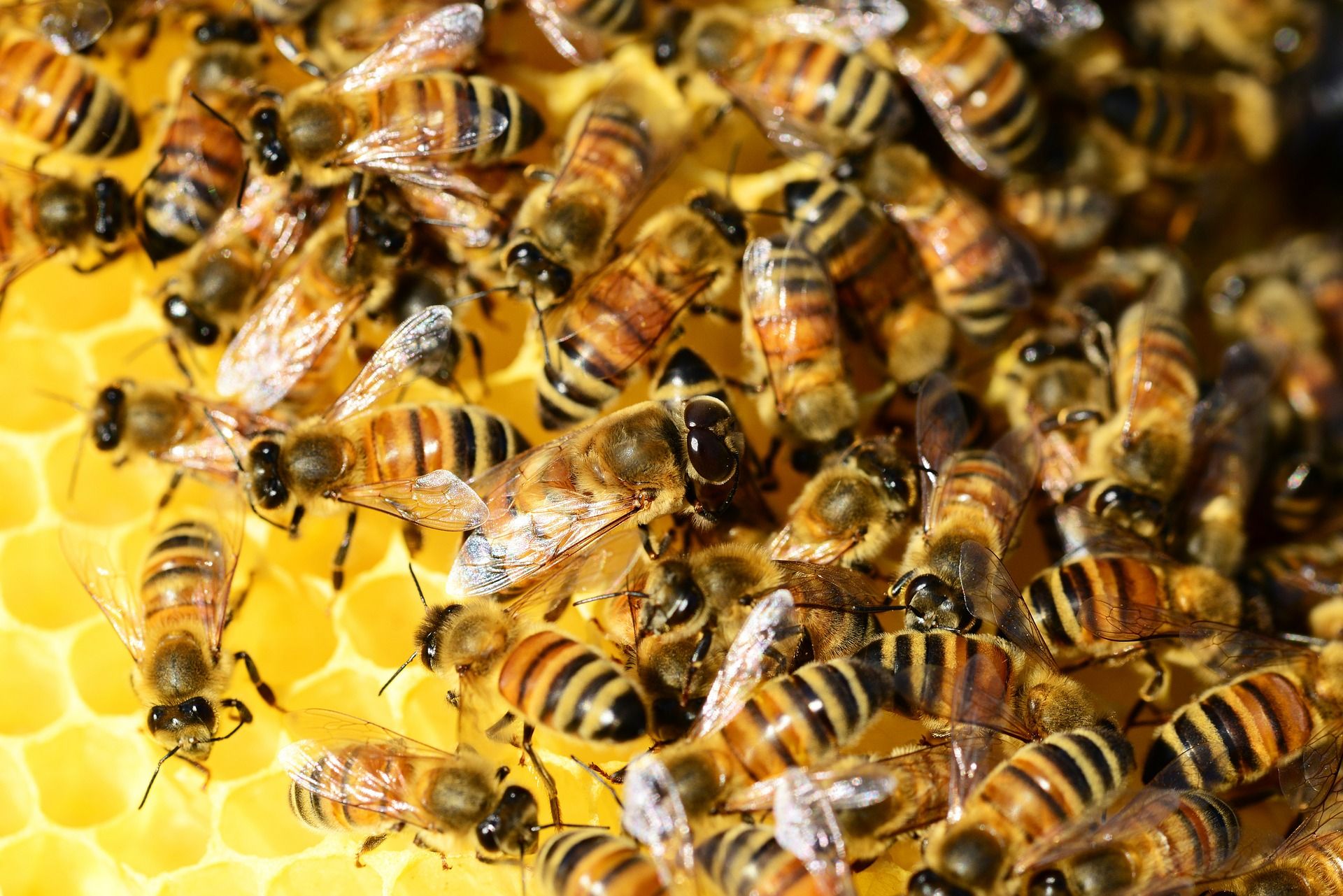Varroa Destructor sounds like the name of a villain in a superhero movie. And for honeybees around the world, it might as well be.
This parasitic mite is the leading cause of honeybee colony loss worldwide, and it infests almost every honeybee colony in the United States, according to the National Honeybee Survey. But a University of Maryland-led study could help in efforts to finally eradicate the pest.
The study, published last month in a multidisciplinary science journal, found that Varroa Destructor actually feeds on a honeybee organ called the fat body, disputing the long-standing assumption that the mite subsists on the insect’s blood.
Leading author Samuel Ramsey, who is conducting postdoctoral research in the entomology department’s bee lab, said this revelation could help him disrupt the mite’s ability to acquire nutrition from the fat body or transport nutrition to its reproductive organs.
“Then I can potentially sterilize the mite, and that would provide us with another way of getting rid of these organisms,” Ramsey said.
[Read more: UMD researcher co-authored a study showing longer springs threaten bees]
Ramsey began to question mainstream scientific thought regarding the mites’ food source after entomology professor Dennis vanEngelsdorp, who later co-authored the study, noted that their excrement was too dry to be composed of the breakdown of blood.
The doctoral student said he became further convinced that “something odd was going on” when he noticed the mite’s digestive system wasn’t structured for a diet composed primarily of water, which makes up most of bee blood.
“In addition to that, the mites are able to produce an egg that is absolutely gigantic, and are able to create an egg of this size every day, every 30 hours,” Ramsey added. “You wouldn’t expect they would be able to do that on a diet that is mostly water.”
A deep dive into early research conducted on Varroa Destructor confirmed Ramsey’s suspicions. He tracked down the first paper published on the specimen, published in Russia in the 1960s, when Varroa Destructor was only native to Russia and China. While scientists could tell how much a mite ate in a particular sitting, they couldn’t confirm where exactly on a honeybee it was feeding.
The subsequent confusion most likely resulted when scientists, who couldn’t speak Russian and thus couldn’t understand the paper’s full text, relied upon its one-paragraph abstract and subsequent studies that cited the original. All were written in English and made it seem like the authors were sure that honeybee blood was the mite’s food-source.
[Read more: Honeybees are dying. In three minutes, a UMD student can tell you why.]
To prove this assumption false, Ramsey, vanEngelsdorp and their 10 co-researchers conducted multiple experiments. They first found that 90 percent of mites found on adult bees were located on their abdomens, where the majority of their fat is stored.
“We looked for microscopic evidence of bite marks,” vanEngelsdorp said. “We also could tell from the bite marks that they were clearly feeding on the tissue.”
Ramsey and his team also marked bees with two fluorescent biostain, red for fat body tissue and yellow for their blood, and examined mites after they fed on the bees. The researchers found red dye in the mites’ stomach, which implied they were eating fat.
Finally, Ramsey fed the mites a diet composed of varying ratios of blood and fat body. He found that those given only blood had the highest mortality and lowest egg production rates, and those given only fat body had the lowest mortality and highest egg production rates.
“They absolutely need fat bodies in their diet,” Ramsey said. “If you just give them blood, the mites died at the same rate as they do if they’re starved.”
Figuring out the mites’ food source would have impacts extending far beyond enforcing the vitality of honeybee colonies.
Honeybees are among a group of pollinators that support the production of 87 percent of leading food crops worldwide, according to the United Nations’ Food and Agriculture Organization. As a result, the stability of ecosystems across the globe is dependent on the insect’s survival, said Emma Kearney, a freshman public policy major.
“A lot of people, when they think of extinction and endangerment of animals, they think it’s just one animal,” Kearney said. “But especially with the honeybee, since they pollinate our plants, it would be catastrophic to the environment.”



